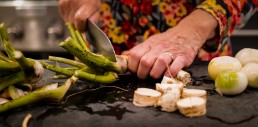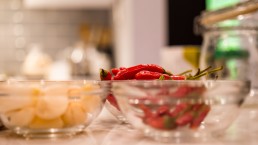Pat’s Top Ten Super Foods & Herbs
What is a Super Food?
I’m sure we’d all like to think of a ‘magic bullet’ that could take care of all our health issues, which is why the title of this article is appealing: eat these foods or herbs and you will be well.
The fact is, all whole, organic, unprocessed foods are super foods. If we eat a variety of brightly coloured fruits and vegetables along with whole grains, nuts, seeds, legumes, coldwater fish and herbs and give chemicals and processed or fast foods a wide berth, we will feel better, have more energy and will maintain a healthy body weight.
Still, it is handy to have a short list of must-have foods and herbs that we know we can turn to for essential nutrients and maximum health benefits. My list boasts foods that have been proven to offer vital phytonutrients for helping to ease the following health benefits:
- Lower or help regulate blood sugar levels
- Help regulate metabolism and burn body fat
- Help protect the heart
- Help prevent cancer
- Detoxify vital organs
- Lower blood pressure
- Prevent or reduce inflammation
- Aid digestion
Pat’s Top Ten
It is known that the everyday choices we make have long-term effects on our health, and in order to begin to see the benefits listed above, you will need to include the following foods in your daily eating pattern. It’s time to ‘spring clean’ your diet by eliminating harmful high fat, low nutrient foods and replacing them with super foods everyday:
- Cruciferous vegetables
- Dark-skinned berries
- Alliums
- Herbs and spices
- Fatty fish
- Nuts
- Legumes
- Dark chocolate
- Seaweed
- Seeds
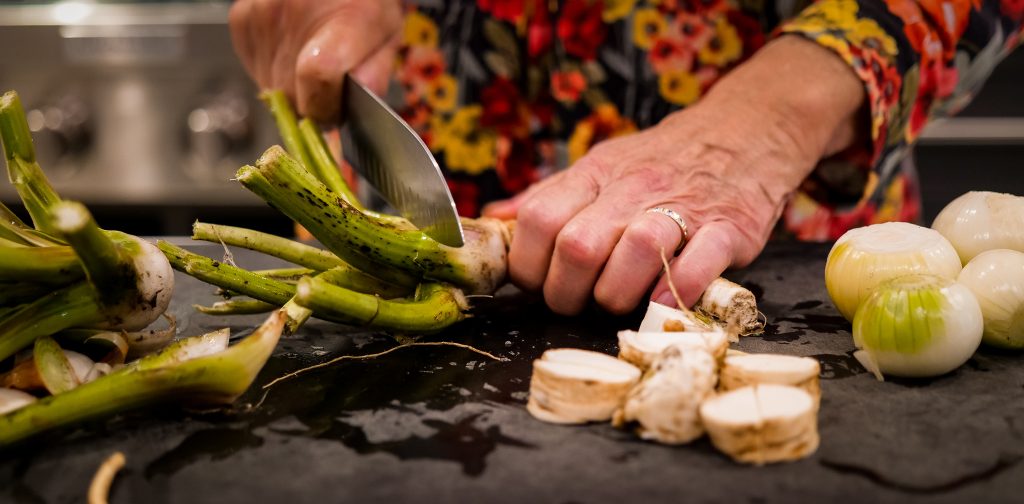
Super Food Breakdown and Recipes
Cruciferous Vegetables
Brussels sprouts, cabbage, cauliflower, broccoli rabe – contain a powerful range of disease fighters. Their Endoles and sulforaphane may increase enzymes that lower the incidence of colon and lung cancers.
My Advice: eat these foods raw and at least three times per week, everyday is ideal.
Asparagus and Cauliflower Salad Recipe:
Ingredients:
- 1 tablespoon avocado or olive oil
- 1 onion, chopped
- 2 cloves garlic, chopped
- 2 tablespoons Herb Seasoning Paste or Spring Pesto (recipes below)
- 2 cups fresh asparagus pieces
- 1 cup thinly sliced cauliflower
- ½ cup shredded carrots
- ¼ cup raisins or chopped dates
- 1 tablespoon sea salt and freshly ground pepper
- 1 cup, lightly packed baby spinach, lightly steamed
Method:
1. In a wok or skillet, heat oil over medium-high heat. Add onion and cook, stirring frequently for 5 minutes or until soft and lightly colored. Add garlic and paste and cook, stirring constantly for 1 minute. Add asparagus and cauliflower and mix well to coat with onions and spices. Cook, stirring constantly for 3 to 5 minutes or until vegetables are crisp-tender.
2. Remove from heat and stir in carrots and dates. Season to taste with salt and pepper. Serve warm over spinach.
Makes 4 to 6 servings
Dark Skinned Berries
Blueberries, blackberries, acai berries – their high concentrations of anthocyanins and phenolic pigments (which make them dark blue, red or purple in colour) give them exceptional antioxidant, anti-diabetic and heart protective properties.
My Advice: include raw (fresh or frozen) dark-skinned berries at least once daily in meals.
Black Berry Smoothie Recipe:
Ingredients:
- ½ cup pomegranate juice
- 1 tablespoon avocado oil
- ½ cup fresh or frozen blueberries
- ½ cup fresh or frozen blackberries
- ¼ cup frozen acai berries or raspberries
- 4 beet top leaves or spinach
- 1 tablespoon chia seeds
- ¼ teaspoon ground cinnamon
Method:
1. In a blender, combine juice, oil, blueberries, blackberries, acai berries, green leaves and chia seeds. Blend on high until smooth. Pour into 2 glasses and garnish each with cinnamon.
Makes 2 servings
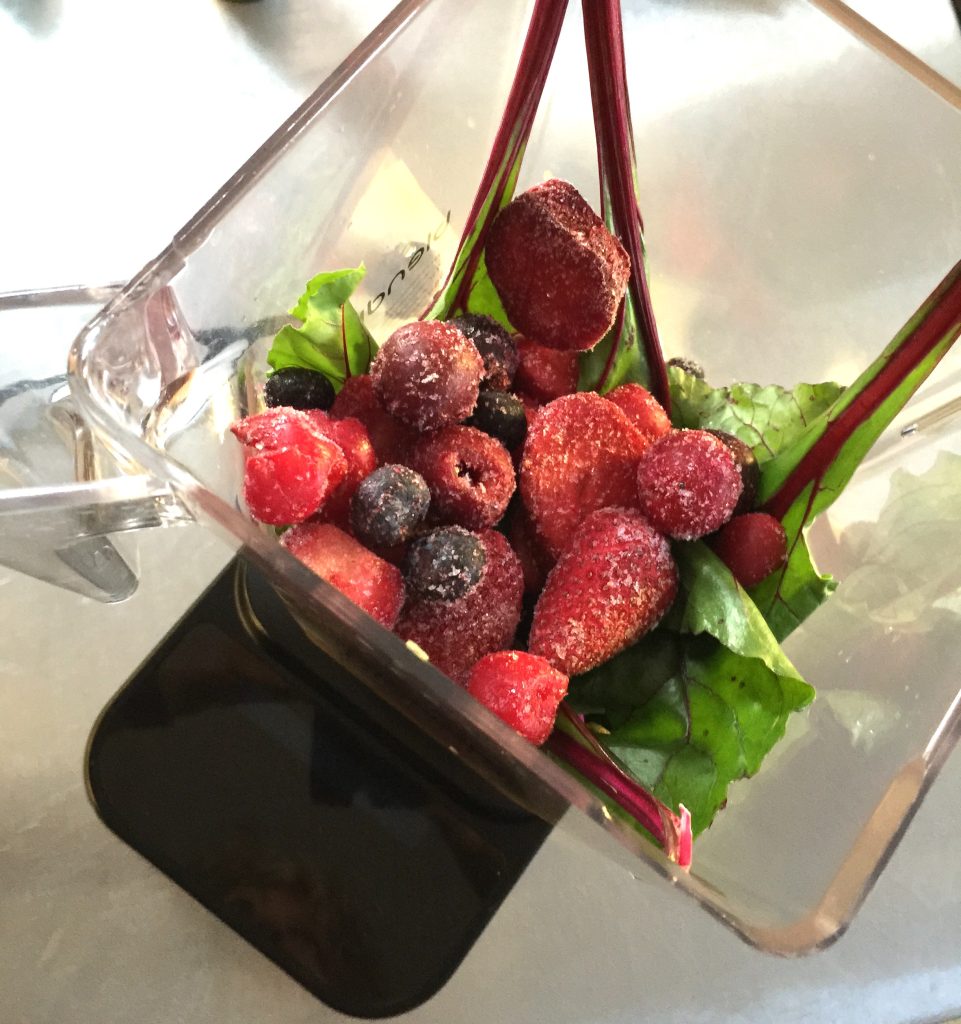
Alliums
Leeks, garlic, onions, shallots. With garlic the hero of the bunch, alliums help to protect against prostate, stomach and colon cancer; lower blood pressure, blood sugar and cholesterol levels; and are antibacterial along with other benefits.
My Advice: eat raw garlic once a day and include one other allium in a daily meal.
Leek, Garlic and Onion Tart Recipe:
Ingredients:
10-inch (3 L) spring form pan or round tart pan, lightly oiled
Potato Base:
- 3 cups thinly sliced, potatoes
- 1 cup thinly sliced, peeled sweet potato
- 3 tablespoons honey mustard
- 2 tablespoons olive oil
- 1/2 teaspoon salt
- Freshly ground pepper
Topping:
- 1/4 cup sliced leek, white and tender green parts
- 4 cloves garlic, slivered
- 3 cups thinly sliced onions (about 3 onions)
- 3 tablespoons Herb Seasoning Paste or Spring Pesto (recipes below)
- 1/4 cup freshly grated Parmesan cheese
Method:
Preheat oven to 375°F (190°C)
1. Potato Base: In a large bowl, toss potatoes with mustard and oil. Spread in bottom of prepared pan. Press potatoes with the back of a spoon to compress. Sprinkle salt and pepper over top.
2. Topping: In the bowl used for the potatoes, toss leek, garlic, and onions with Herb Paste. Spread evenly over potato base. Bake in preheated oven for 40 minutes or until potatoes are tender and onions are golden. Sprinkle Parmesan over top and bake for another 3 minutes or until cheese is lightly browned. Transfer to a cooling rack and let stand for 10 minutes before serving.
Makes 4 to 6 servings
Herbs and Spices
Thyme, rosemary, turmeric, ginger, cayenne, cinnamon – most fresh green herbs contain antioxidant properties along with other healing benefits specific to the herb; dandelion and burdock leaves are cleansing; spices such as cinnamon, cloves, and nutmeg contain powerful phytonutrients that regulate and affect body functions.
My Advice: eat fresh green herbs with 2 meals each day and cook with fresh ground spices (season dishes with 1 tablespoon Spring Pesto, below) every day.
Herb Seasoning Paste Recipe:
Ingredients:
- 1 cinnamon stick (2-inches), crushed
- 1 tablespoon whole yellow or brown mustard seeds
- 1 tablespoon whole coriander seeds
- 2 dried cayenne peppers, cut into pieces
- ¼ cup chopped fresh green herbs (thyme, oregano, dandelion, parsley or burdock leaves)
- 2 cloves garlic
- 1 piece (1-inch) fresh ginger, peeled
- 1 teaspoon ground nutmeg
- 1 tablespoon avocado or olive oil
- 1 tablespoon brown rice syrup
Method:
1. In a spice grinder or mortar (using pestle) chop or pound cinnamon, mustard, coriander and peppers until consistently ground (fine or coarse as desired). Add garlic and ginger and blend or pound to a thick paste. Add nutmeg, oil and rice syrup and mix until well blended and smooth. Transfer to a small jar. Label and store in the refrigerator for up to 2 weeks.
Makes 1/2 cup
Fatty Fishes
Wild salmon and sardines are one of the best sources of omega 3 fatty acids. Avoid farmed fish because wild-caught fish eat krill and other wild foods that contribute to the quality of their flesh; they are lower in mercury and high in vitamin D and have not been fed grain and antibiotics.
My Advice: eat fatty fish twice a week.
Braised Salmon and Kale with Red Lentils Recipe:
Ingredients:
- 1 tablespoon avocado or olive oil
- 1 small red onion, chopped
- 1 tablespoon Herb Seasoning Paste (recipe above) or Spring Pesto (recipe below)
- 2 cups chopped kale (still wet from washing)
- 4 wild salmon fillets (4 oz/125 g each), skin on one side
- 1 can (19 oz/540 mL) red lentils rinsed and drained
Method:
1. In a skillet or wok, heat oil over medium-high heat. Add onion and seasoning paste and cook, stirring frequently for 5 minutes or until onions are soft and lightly coloured. Add kale and toss to coat with onions. Place salmon over top, skin side up. Cover, reduce heat to low and cook for 10 to 15 minutes or until salmon is opaque and flakes easily with a fork. Remove skin from salmon and remove fillets to a platter. Toss lentils with kale mixture and heat through.
Makes 4 servings
Nuts
All nuts, especially walnuts and almonds are great sources of antioxidants, vitamin E, selenium and magnesium, and of all nuts, walnuts are highest in alpha-linolenic omega-3 fatty acids, which lower LDL (bad) cholesterol.
My Advice: eat a handful of nuts every day to help reduce the risk of heart disease.
Spring Pesto Recipe:
Ingredients:
- ¼ cup walnuts or almonds
- 2 tablespoons sesame or flax seeds
- 4 cloves garlic
- 1 cup chopped fresh dandelion leaves
- 1 cup fresh parsley
- 2 tablespoons fresh rosemary or thyme
- ¼ cup grated Parmesan cheese
- 1 cup olive oil
- sea salt
Method:
1. In a blender or food processor, chop walnuts, flax seeds and garlic. Add dandelion, parsley and rosemary and start motor. Add olive oil slowly through opening in feed tube and process until pesto is desired consistency. Season to taste.
Makes 2 cups
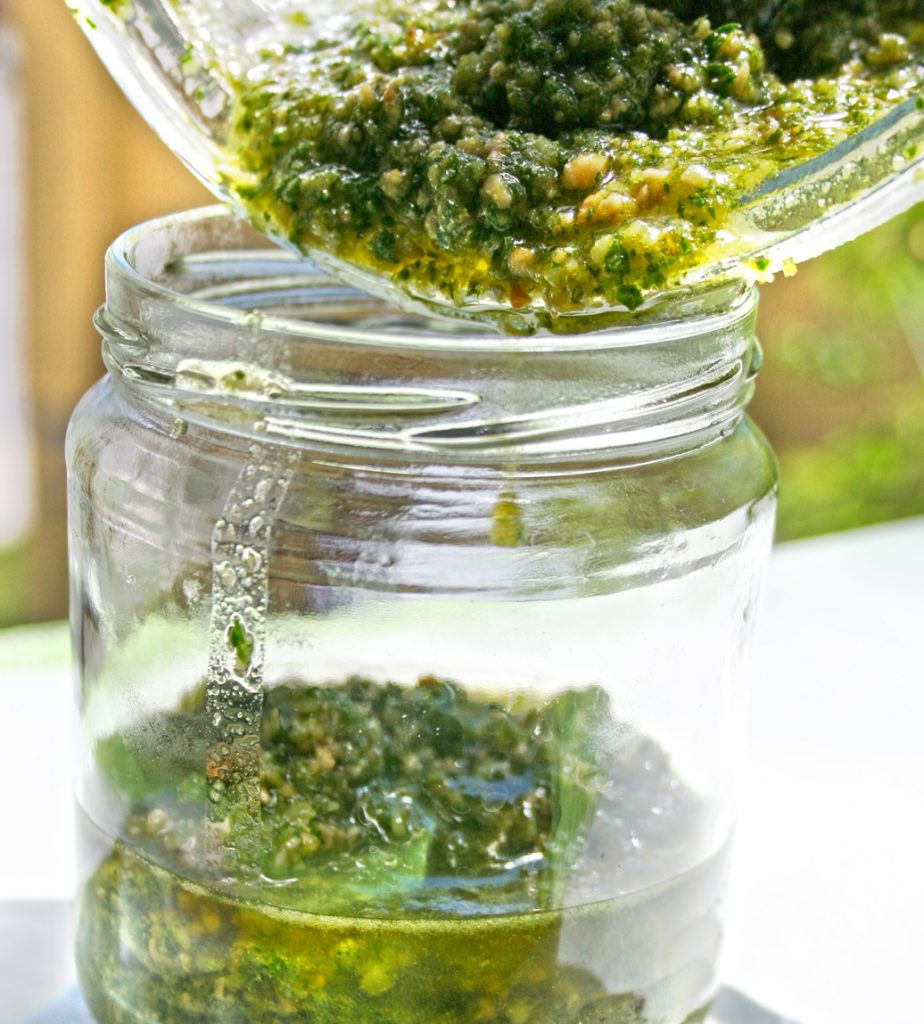
Legumes
Dried peas, beans, lentils – a good plant protein; high in fiber, associated with lower risks of heart disease, diabetes, obesity and cancer.
My Advice: eat legumes three times per week, more often if you are vegetarian/vegan.
Ancho Chocolate and Sweet Potato Stew Recipe:
Ingredients:
Chile Seasoning:
- 3 dried ancho chiles (or 1 teaspoon chili powder)
- 1 tablespoon chopped fresh oregano
- 1 teaspoon ground cumin
- 1/2 teaspoon ground cinnamon
- 2 teaspoons sea salt
Stew:
- ½ head cauliflower, trimmed and cut into ¼-inch pieces
- 4 tablespoons avocado oil, divided
- 1 red onion, chopped
- 4 cloves garlic, chopped
- 1 sweet potato, trimmed and cut into large dice
- ½ rutabaga, trimmed and cut into small dice
- 2 carrots, coarsely chopped
- 1 can (28 oz /796 mL) diced tomatoes and juice
- 1 stick (2-inch) cinnamon
- 2 cups vegan stock or water
- 1 oz (30 g) unsweetened dark chocolate, grated
- 1 can (14 oz/398 mL) pinto beans, drained
- 2 cups coarsely chopped kale, spinach or Swiss chard
Method:
1. Make Chile Seasoning: slice chilies in half lengthwise and remove stems and seeds. Toast chilies: heat a small dry skillet over medium heat. Add chilies, pressing down with tongs for 1 minute, turning over and toasting for 30 seconds on other side. Let cool and slice into 4 pieces. Pulse in a spice grinder until finely ground. Transfer to a small bowl and stir in oregano, cumin, cinnamon and salt.
2. Preheat oven to 375 F and line a rimmed baking sheet with parchment paper. Arrange cauliflower in a single layer on the sheet and drizzle with 2 tablespoons of oil. Bake in preheated oven for about 30 minutes or until lightly browned and crisp-tender. Remove from oven and set aside.
3. Meanwhile, heat remaining oil in a large soup pot over medium heat. Add onion and cook, stirring frequently for 5 minutes. Add garlic and Chile Seasoning and cook, stirring frequently for a minute or two.
4. Stir in sweet potato, rutabaga, carrots, tomatoes and their juice, and cinnamon stick. Bring to a boil and cook, stirring occasionally for about 6 minutes or until the mixture is thickened slightly.
5. Add stock, increase heat to high and bring to a boil. Lower heat and simmer, covered for about 30 minutes or until vegetables are crisp-tender.
6. Add chocolate and stir until it is melted into the mixture. Stir in cauliflower, beans and kale and simmer until heated through, about 3 minutes.
Ladle into 6 serving bowls.
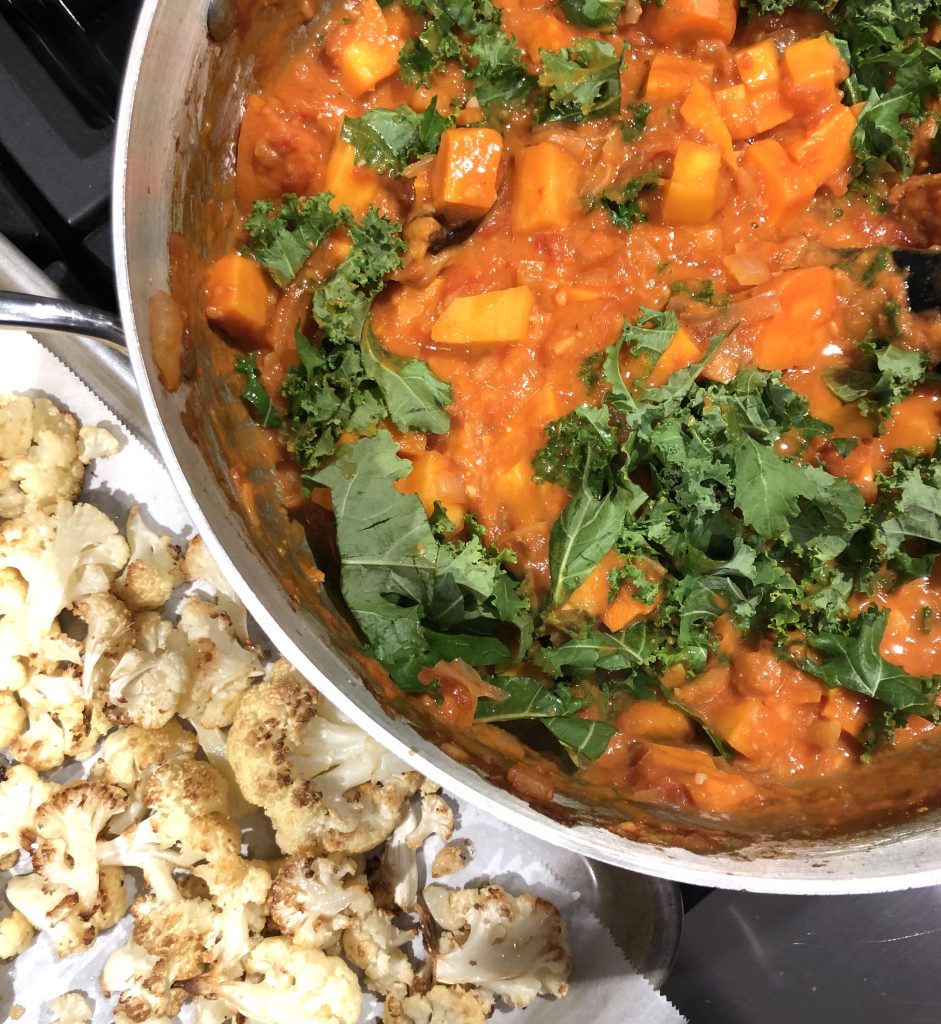
Dark Chocolate
70% cocoa or higher – high in antioxidants for anti-aging; flavonoids that prevent clogged arteries and lower blood pressure; and magnesium.
My Advice: indulge in one small square (1/2 oz/15 g) of the best quality dark chocolate (as high in cocoa as you can comfortably enjoy) every day.
Ancho Chocolate Chile (see recipe, above)
Seaweed
Arame, hijiki, kelp, kombu, nori, wakame – detoxify the body and help prevent assimilation of heavy metals; may have anticancer effects; individual seaweed varieties have varying levels of calcium, iodine, potassium and iron.
My Advice: eat seaweed once or twice per week and eat kombu or dulse raw (crushed and sprinkled over breakfast cereals, salads and main course dishes) every day.
Shiitake Mushroom Nori Rolls Recipe:
Ingredients:
- 3 tablespoons avocado or olive oil, divided
- 3 green onions, thinly sliced
- 1 zucchini, peeled and diced
- ½ cup sliced shiitake mushroom caps
- ¼ cup chopped almonds
- 3 tablespoons sesame seeds
- 1 tablespoon maple syrup
- 1 tablespoon tamari or soy sauce
- 1 tablespoon Spring Seasoning Paste (recipe above)
- 1 cup cooked Japanese sticky rice
- 2 sheets dried nori
Method:
1. In a skillet or wok, heat 2 tbsp of the oil over high heat. Swirl to coat the base and sides. Add onions, zucchini and mushrooms and cook, stirring constantly for 4 minutes. Stir in almonds, sesame seeds, brown rice syrup, tamari and seasoning paste. Transfer to a bowl and let cool. Toss rice with mushroom mixture.
2. Lay one sheet of nori out on a sushi mat or clean tea towel. Spoon rice mixture along the long side of the sheet and roll up. Moisten the long end to close the roll. Set aside and fill and roll the remaining nori sheet.
Makes 2 rolls, about 12 slices
Seeds
Flax, chia, pumpkin, sunflower and sesame seeds – sesame seeds enhance absorption of vitamin E and help lower cholesterol; pumpkin seeds contain beta-sitosterol that offers some benefit for prostate hyperplasia (BPH); sunflower seeds help lower cholesterol and may lower the risk of heart disease.
My Advice: eat 2 to 3 tablespoons of seeds (whole sesame seeds if you can find them; pumpkin if you are male) every day.
Power Oat Bars Recipe:
Ingredients:
11-by 7-inch (2L) baking pan
- 1 cup coarsely chopped walnuts
- ½ cup sesame seeds
- 2 cups granola cereal
- 1 cup large flake rolled oats
- 1 cup dried cherries or cranberries
- ¼ cup whole flaxseeds
- 2 tablespoons whole chia seeds
- 1 tablespoon freshly ground sea salt
- ½ cup brown rice syrup or honey
- 2 tablespoons coconut oil
- 2 teaspoons pure vanilla extract
Method:
1. In a large bowl, combine walnuts, sesame seeds, granola, oats, cherries, flaxseeds, chia seeds, and sea salt.
3. In a saucepan, heat brown rice syrup over medium-high heat until lightly simmering. Remove from the heat and stir in the coconut oil and vanilla. Stir until the coconut oil is dissolved. Pour over grain mixture. Press into the prepared baking pan and set aside for 15 minutes. Cut the mixture into 2 x 2-inch squares. Store at room temperature for up to 2 weeks or in the refrigerator for up to a month.
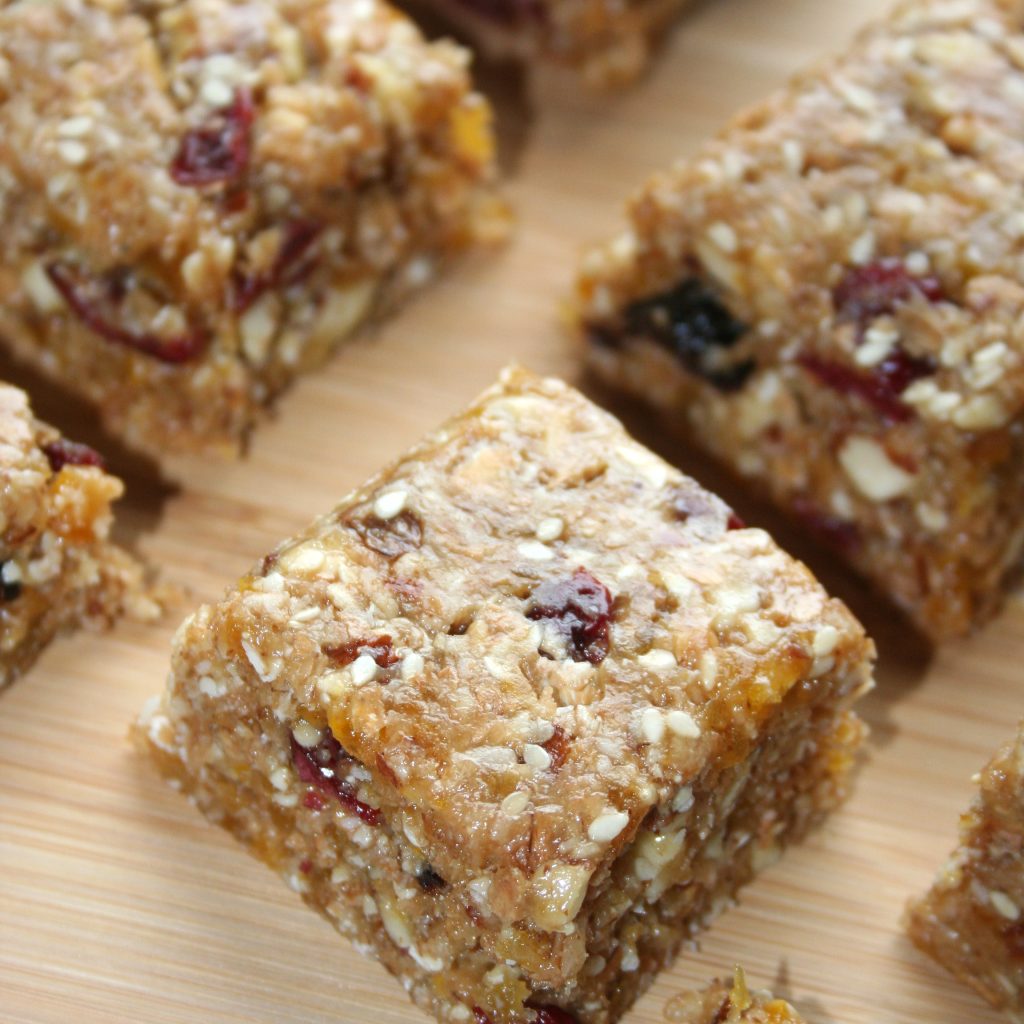
Enjoy!
Have fun trying new recipes and incorporating more super foods into your every-day life!
Recipe photos provided by Pat Crocker
Header photo provided by Serena Mor
Hot Chiles Bite Winter Back
Chile Pepper Medicine Turns Up the Heat
While on the quest for the shortest route to the East, Spanish navigators discovered the hot and fiery chile pepper. Abundant and adored by Caribbean natives, the conquistadors called it pimiento, the Spanish word for pepper.
Capsaicinoids are the naturally occurring compounds that give chile peppers pungency and heat. Every type of pepper has a unique taste – from slightly floral, fruity, sweet, and spicy to pungent – and each type has a heat rating that is based on the kind and intensity of the capsaicin it contains. For example, peppers that contain only nordihydrocapsaicin (NDHC) will present a mellow, warming effect that recedes quickly and lingers briefly at the front of the mouth. In contrast, the explosive heat and pungency of pomodihydrocapsaicin (HDHC) produces a strong numbing, burning sensation in the throat and back of the tongue that is more intense and lasts longer.
Chile heads (lovers of hot peppers) have long known that the hotter the chile pepper (and the more capsaicin it contains), the greater will be the endorphin rush they experience. Endorphins are produced by the pituitary gland and the hypothalamus – when released they cause a positive feeling in the body, similar to that of morphine. By triggering endorphins, capsaicins work as natural painkillers along with boosting memory function.

How to Gauge the Heat
Want to eat more chiles but are afraid of their blazing bite? I have two tips for helping you enjoy the incredible benefits of chiles.
First, get familiar with the Scoville Heat Unit (SHU) system of measuring the heat in chile peppers. The Scoville Scale is a standard measurement of the concentration of capsaicin (the constituent that causes the skin and mouth to tingle or burn) in every type of pepper and assigns it a number from 0 to 5 million.
Secondly, start cooking with peppers that are low on the Scoville scale and begin to work your way towards a higher rated pepper. Sweet bell pepper types rate 0 to 1000 Scoville Units, which means that they are delicious (red bell peppers are sweeter than green), with no discernable burning, but are not high in capsaicin. Hungarian paprika is only slightly hotter, with 1,500 units, but it imparts an apple note that is perfect for stew and goulash dishes, or in vegetable stir-fries. Poblano chiles and New Mexican types move up the scale to 7,000 SHU and are roasted or stuffed and baked for a mildly hot experience that dissipates quickly.
My goal, when I began to grow, buy, and cook with chile peppers was to become comfortable eating cayenne peppers, which flare from 30,000 to 50,000 SHU. This is a reasonable goal because we enjoy significant health benefits from adding one fresh (or dried) cayenne pepper to smoothies, soups, stews, stir-fries, or other dishes at least three times per week.
I’m happy to say that it didn’t take long before I was sizzling my way up to Habanero type peppers, which register between 80,000 and 150,000 SHU. Then my friends at Shady Acres Herb farm in Minnesota sent me some Bhut Joloka (aka Ghost) chiles that they had grown. Although Carolina Reaper chiles register higher in SHU (1,600,000 to 2,200,000 SHU), Ghost chiles are still considered to be incendiary, combusting at 855,000 to 2,199,999 SHU. I dried my cache of Ghost red hots and sometimes, when I am feeling adventurous, I slip on a pair of disposable gloves, snip off a quarter-inch piece of that phantom pepper and dice it into teeny granules which then get added to a chowder or curry dish. It never fails to deliver the famous chile-rush.
Health Benefits of Cayenne
Being exceptionally high in vitamin A, which acts as an antioxidant to help fight aging and cell damage, cayenne peppers, and all others above or below them on the Scoville Heat scale, deliver an incredible array of healing gifts. Buy or grow them and use fresh, or dry and crumble them into all kinds of dishes.
Here is what you can ignite once you begin to enjoy the cayenne conflagration:
- Anti-inflammatory action – reduces the pain and swelling of arthritis. Cayenne cream or salve is applied topically to treat arthritis and muscle pain
- Lowers cholesterol – and triglyceride levels for heart health
- Fights bacteria and viruses – with its high vitamin C content
- Increases circulation – by improving blood flow and stimulating sweating (an important process of detoxification). A tea made of warm water, lemon juice, and cayenne pepper is an excellent morning beverage for total body health
- Anti-fungal properties – soak feet in warm water with one tablespoon powdered cayenne pepper to help alleviate athlete’s foot
- Aids digestion – capsaicin stimulates the digestive tract and may give relief to people suffering from peptic ulcers by stimulating blood flow that nourishes the gastric mucosal membrane
- Helps relieve allergies – and acts as a decongestant by stimulating the release of mucus from respiratory passages
- Reduces blood clots – and can be used as a first response for wounds to stop bleeding
How about you? What varieties are you eating or using to make medicine?
Watch for my next post, Cooking with Cayenne. Meantime, here are some recipes that will warm and soothe:
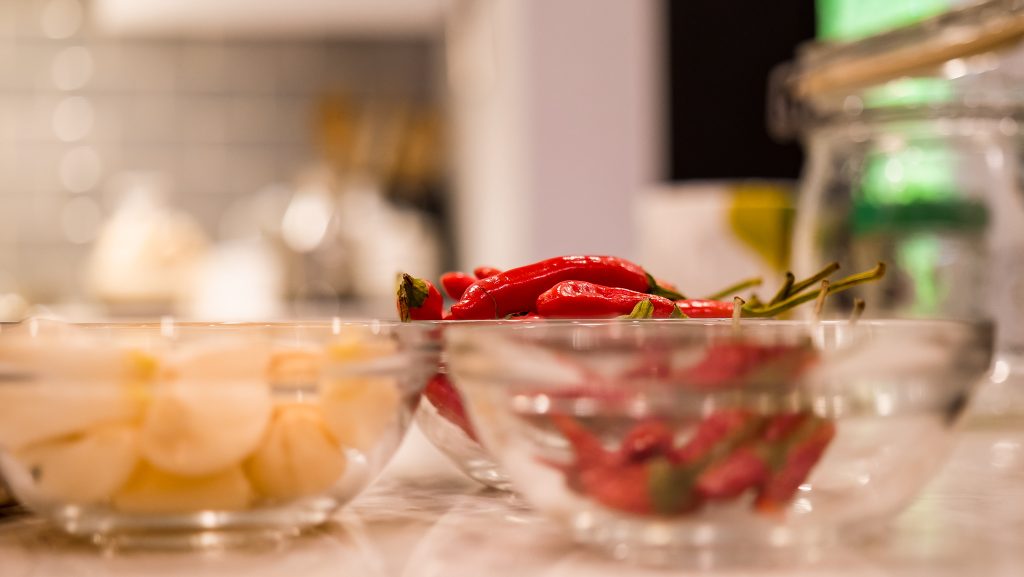
Harissa
A key flavouring and condiment in Middle Eastern and North African cuisine, Harissa is never far from a Moroccan, Libyan, Algerian, Turkish, or Tunisian table. In fact, it is the go-to seasoning for many cooks in the region. Often it is added to soup, stew and curry dishes or tagines, used with meatballs, or rubbed into kebabs and other meats before grilling. The main ingredient is cayenne (or other hot chile peppers) and while it is easy to make from fresh or dried hot chiles, it is also widely available in cans or tubes, or freshly prepared in tubs in Middle Eastern or North African markets.
Dairy products (in particular yogurt), and the starch in pastas and couscous, help to dial the heat down and so they are often paired with harissa and other hot chile dishes.
(Makes 1/2 cup)
Ingredients:
- 12 cayenne, serano, or jalapeno chile peppers, fresh or dried
- 3/4 cup boiled water
- 1 tablespoon cumin seeds
- 2 teaspoons coriander seeds
- 1 teaspoon fennel seeds
- 1 piece (2-inch) cinnamon, crushed
- 1/2 teaspoon fenugreek seeds, optional
- 2 cloves garlic
- 1/2 teaspoon sea salt
- 1/2 cup extra-virgin olive oil
Method:
Discard stems and seeds from the chiles. Using kitchen scissors, cut chiles crosswise into thin strips, letting them fall into a bowl. Pour water over top and soak for 30 minutes or until softened.
Meanwhile, in a small, heavy pan or spice wok, over medium heat, dry-fry cumin, coriander, fennel, cinnamon, and fenugreek seeds (optional) for three minutes, or until fragrant and light brown. Set aside to cool.
Using a small food processor or blender, chop the garlic with the salt. Drain chiles, discarding the soaking water (or reserving it for another use later). Add chiles to garlic and process until smooth. Add toasted spices and process to incorporate them into the mixture.
With the motor running, gradually drizzle in the oil through the opening in the lid, processing the mixture until the sauce is well blended to a consistency of mayonnaise.
Pat’s Cayenne Fire Cider
The name sounds daring, and the brew is ablaze with the energy of healing ingredients. This natural sinus, cold and ‘flu folk remedy has been home-brewed for eons by herbalists, naturalists, and anyone who has learned of its efficacy. Grated horseradish root, garlic, onion, ginger, and hot peppers are the main ingredients that are steeped in organic unpasteurized apple cider vinegar, but you can develop your own amounts and combinations. Before my horseradish plant grew large enough for me to actually dig the roots, I developed the following simple and very potent blend. Now I add the horseradish, but you can omit it if you can’t find fresh root.
See the Resources section for a link to herbalist Rosemary Gladstar’s Fire Cider method [2] and visit the Mountain Rose Blog [3] to read about this well-known herb supplier’s Fire Cider.
(Makes about 4 cups)
Ingredients:
- 25 whole fresh cayenne peppers
- 1 head garlic cloves, peeled and sliced
- 1 cup fresh ginger, grated
- 3 – 4 cups raw unfiltered apple cider vinegar
- Optional Ingredients
- 2 cups grated fresh horseradish
- 6 sprigs fresh rosemary, horehound, thyme, sage, parsley
- 2 onions, chopped
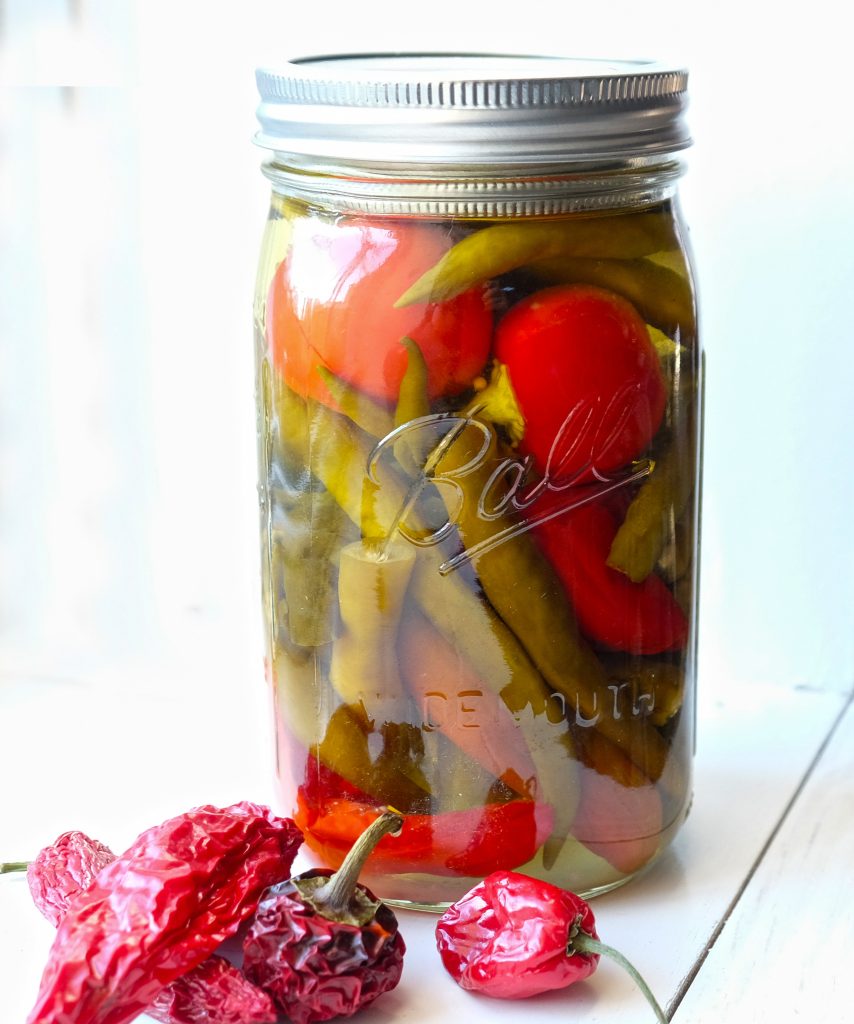
Method:
Clean and slit or halve the peppers. Loosely pack them into a one quart mason-style jar. Add garlic slices and ginger. Add horseradish and other optional ingredients, if using.
Fill the jar, covering the ingredients with vinegar, leaving a half-inch space.
Make sure the peppers are below the vinegar, and cap the jar with the 2-piece lid. Set aside in a cool, dark cupboard for a month or longer.
After steeping the ingredients, you can refrigerate the jar (although it isn’t required). If you don’t strain the vinegar, you can fish out, drain and use the chiles, garlic slices, and ginger in recipes until they are finished. Alternately, you can strain the vinegar and make syrup as follows.
To make a cough syrup: Strain the steeped vinegar into a 6-cup measuring cup, pressing on the solids to extract as much vinegar as possible. Discard the solids.
For every cup of strained vinegar, add 1/4 – 1/2 cup (to taste) liquid honey. Stir well or heat over low setting in a saucepan to melt and combine the honey. Pour into 1-cup jars, cap, label, and store in a cool, dark cupboard.
Serving suggestions for unsweetened steeped vinegar:
- Take one tablespoon of vinegar in a glass of warm water with one to two teaspoons of honey every morning for its tonic benefits.
- Substituting steeped vinegar in recipes that call for regular vinegar (salad dressing, dips, spreads, sauces, and other condiments) will infuse them with the healing benefits of Fire Cider.
- Cough Syrup: Take one tablespoon at the first sign of a cold and repeat every two to three hours until symptoms subside.
Resources
[1] Tucker, Art and Thomas De Baggio, The Encyclopedia of Herbs. Portland, OR: Timber Press, 2009
[2] Rosemary Gladstar, video of her Fire Cider method
Pat Crocker cultivates cayenne and turns up the heat in recipes. Her newest book, The Herbalist’s Kitchen is available on her website and at all major bookstores. Photographer, lecturer, and author of several award-winning books, including Coconut 24/7, Preserving, The Vegan Cook’s Bible, The Vegetarian Cook’s Bible, The Healing Herbs Cookbook, The Juicing Bible, and The Smoothies Bible, Pat would love to hear from you about your personal adventures with herbs. www.patcrocker.com
Blog photos provided by Pat Crocker
Header photo provided by Serena Mor

